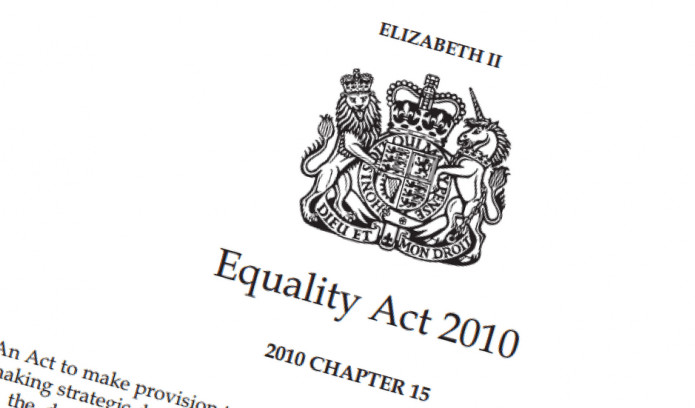


Home » Trans Equality »

Note: This page was written before the Supreme Court decision on the meaning of “Sex” in the Equality Act in April 2025.
The Equality Act 2010 prohibits discrimination and harassment in employment and provision of goods, facilities and services, including education and housing. It covers the protected characteristics of age, disability, gender reassignment, marriage and civil partnership, pregnancy and maternity, race, religion or belief, sex, and sexual orientation.
Under the Equality Act 2010 a person has the protected characteristic of gender reassignment if “the person is proposing to undergo, is undergoing or has undergone a process (or part of a process) for the purpose of reassigning the person’s sex by changing physiological or other attributes of sex“.
The Equality Act Statutory Codes of Practice make clear that you don’t need to have spoken to a doctor and you don’t need to take hormones or have any surgery. You don’t need to have a gender recognition certificate (GRC). It’s enough to have proposed, for example, that you intend to change your name or title (Ms/Mx/Mr) or the pronouns you use (She/They/He).
In September 2020, the Employment Tribunal ruled in Taylor v Jaguar Land Rover Limited that the protected characteristic of gender reassignment includes people who identify as non-binary or gender fluid.
Additionally, the Equality Act 2010 covers situations where a person is subjected to gender reassignment discrimination because they are perceived as trans even though they are not actually a trans person, and situations where a person is discriminated against because of their association with a trans friend or family member.

Direct discrimination is when someone is treated less favourably than others because of a protected characteristic.
Some examples of gender reassignment direct discrimination:
Indirect discrimination is when a rule or policy or way of doing things has a worse impact on people with a protected characteristic than those without, where this cannot be objectively justified.
An example of gender reassignment indirect discrimination:
Harassment is unwanted conduct related to a protected characteristic which has the purpose or effect of violating someone’s dignity or which creates a hostile, degrading, humiliating or offensive environment.
Some examples of gender reassignment harassment:
Victimisation is treating someone less favourably because they have taken (or might be taking) action under the Equality Act or because they are supporting somebody who is doing so.
An example of victimisation:
In most situations the law very clearly protects people from being treated differently on grounds of gender reassignment. However there are some situations, such as sports competitions and religious bodies, where the level of protection is more complicated and it may sometimes be lawful to treat some trans people differently from other service users.


Where deemed necessary for safety or fair competition, sports bodies can require a trans person to have undergone specified physical changes in order to compete as a particular sex.

There are some complicated but very limited circumstances when religious bodies can treat trans people less favourably. If they are providing a service on behalf of a public body (such as a homeless service) they must not discriminate.
30 Bernard Street Edinburgh EH6 6PR
+44 (0)131 467 6039 info@scottishtrans.org
Scottish Trans is part of the Equality Network
Scottish Trans is the Equality Network project to improve gender identity and gender reassignment equality, rights and inclusion in Scotland. The Equality Network is a leading Scottish lesbian, gay, bisexual, transgender and intersex (LGBTI) equality and human rights charity.
The Equality Network is a registered Scottish charity: SC037852, and a company limited by guarantee: SC220213.
We are grateful for funding from the Scottish Government